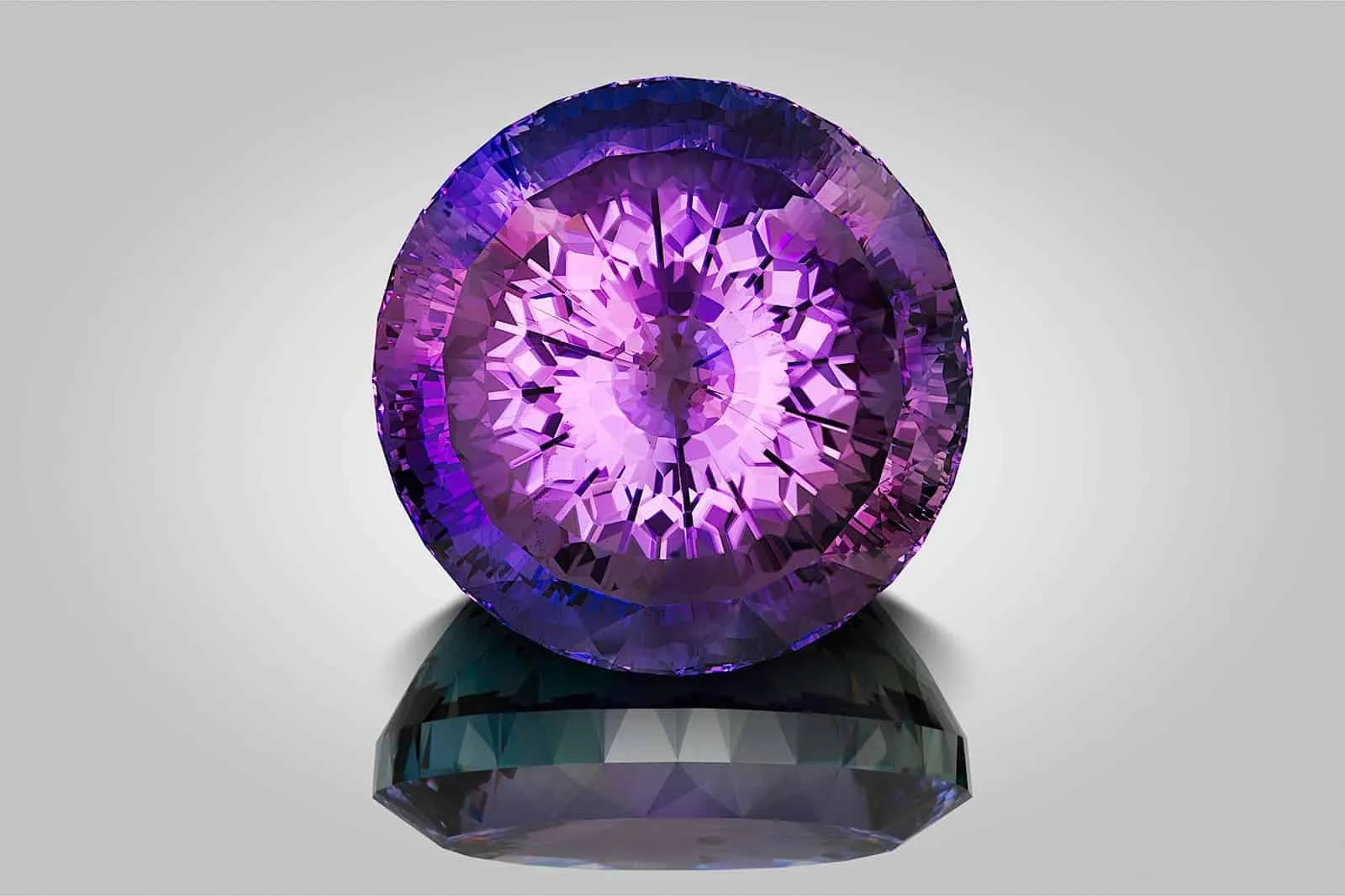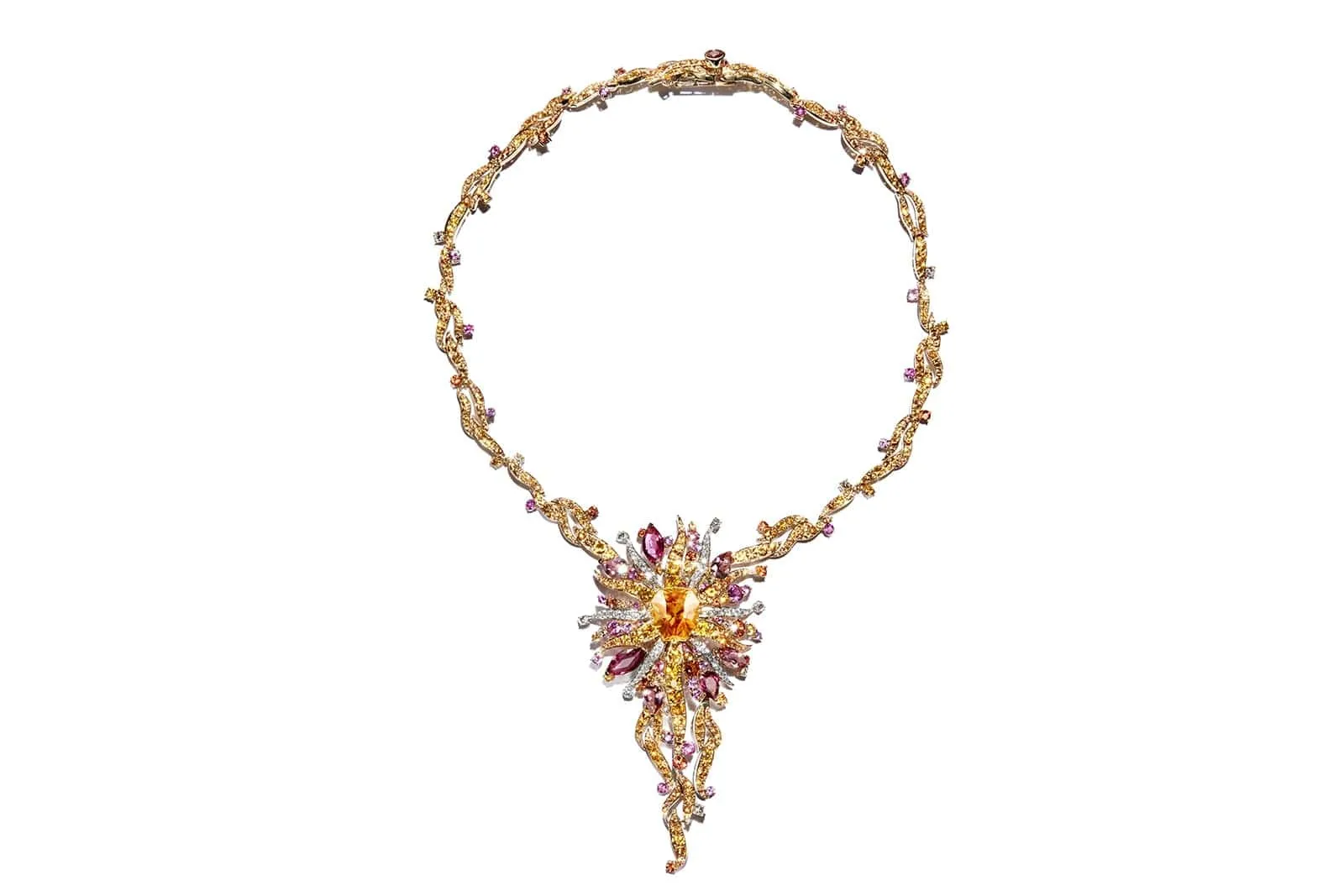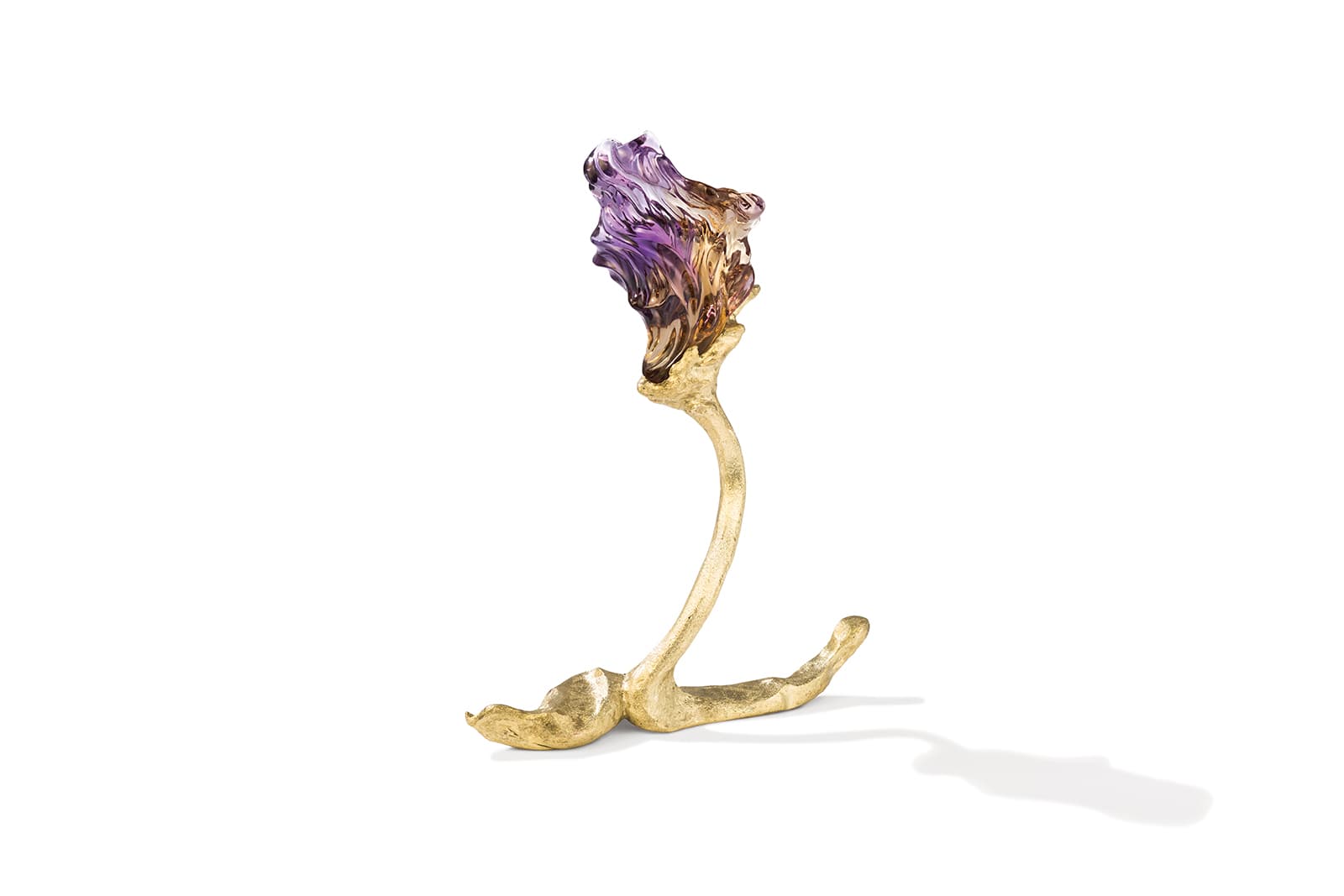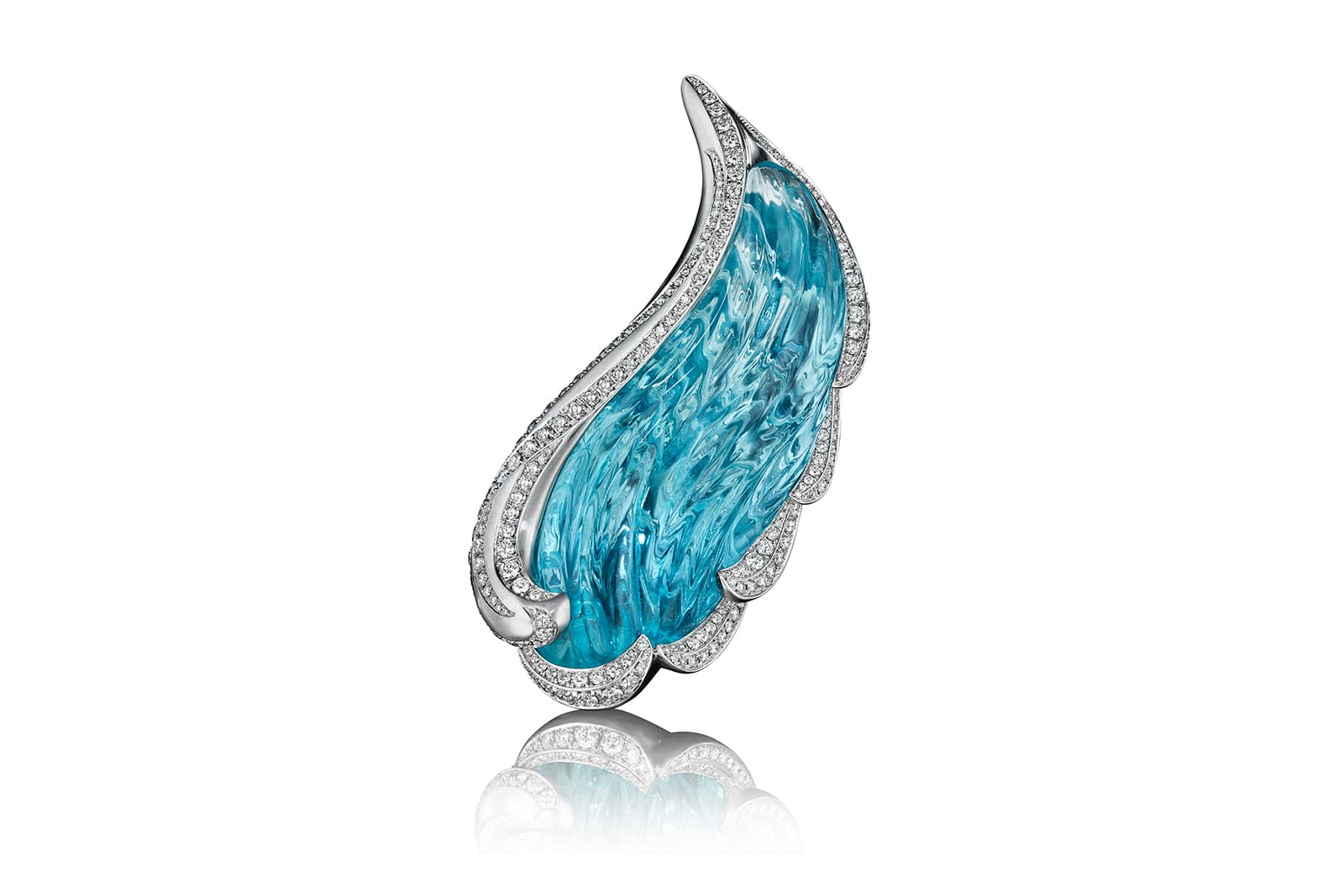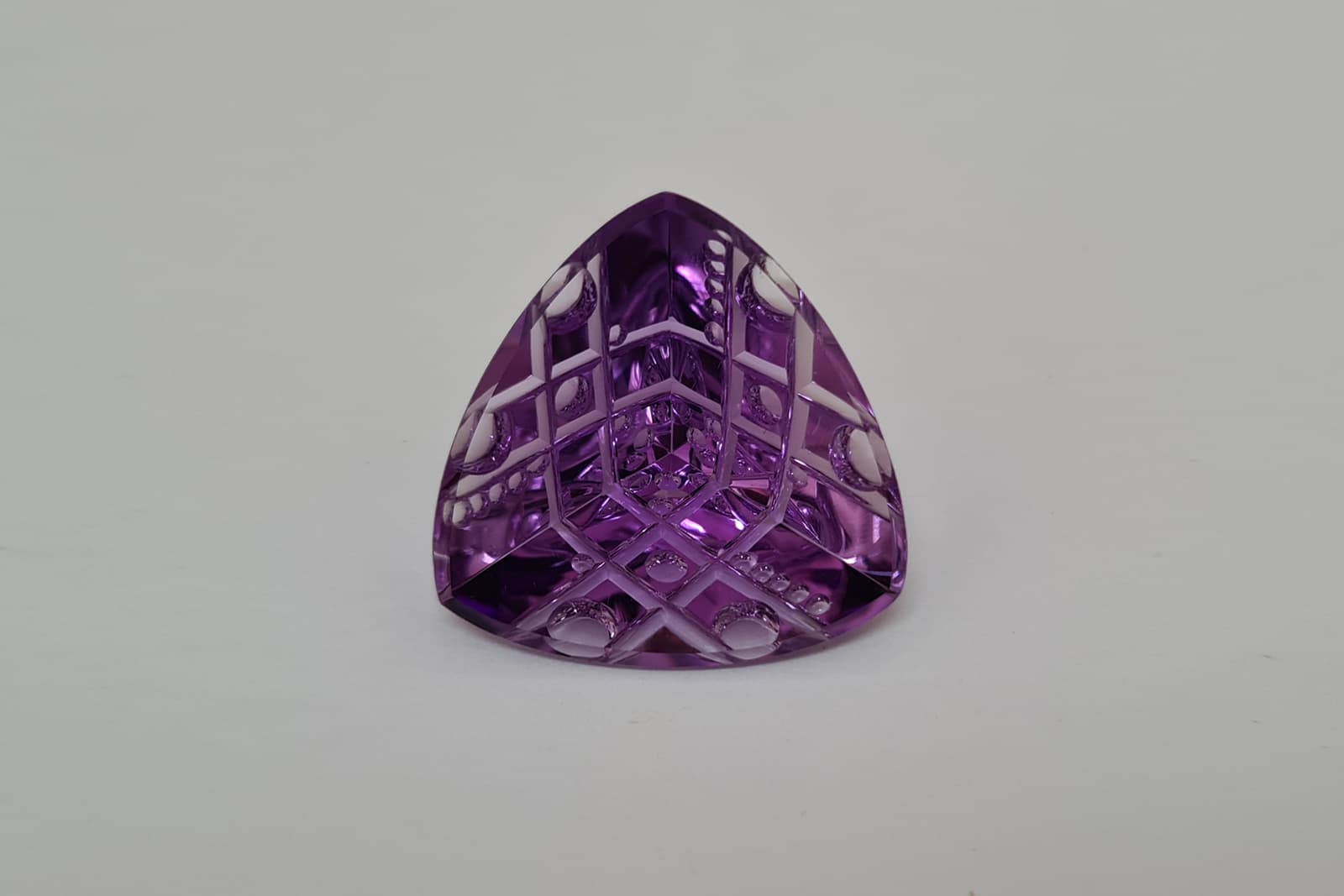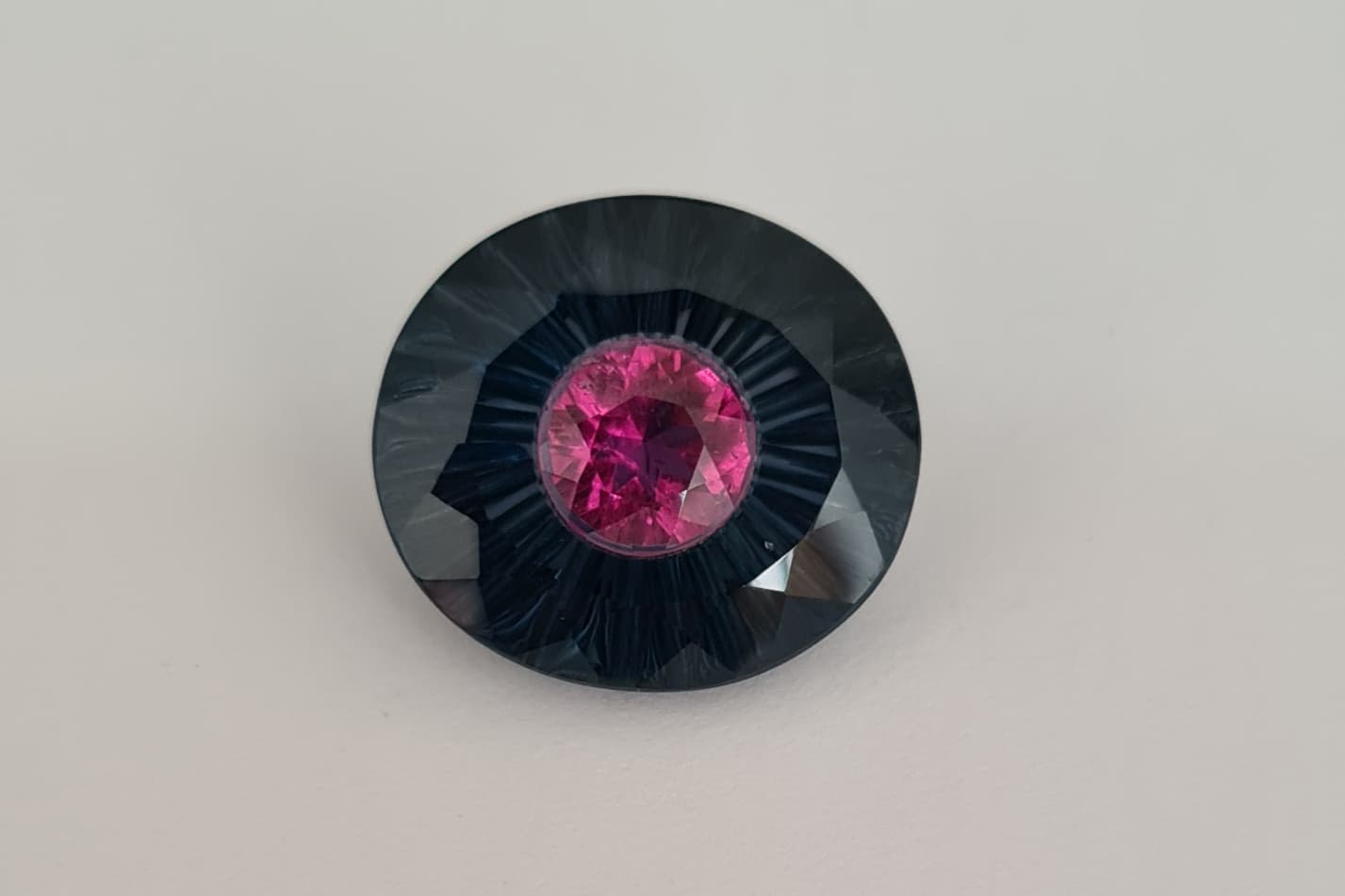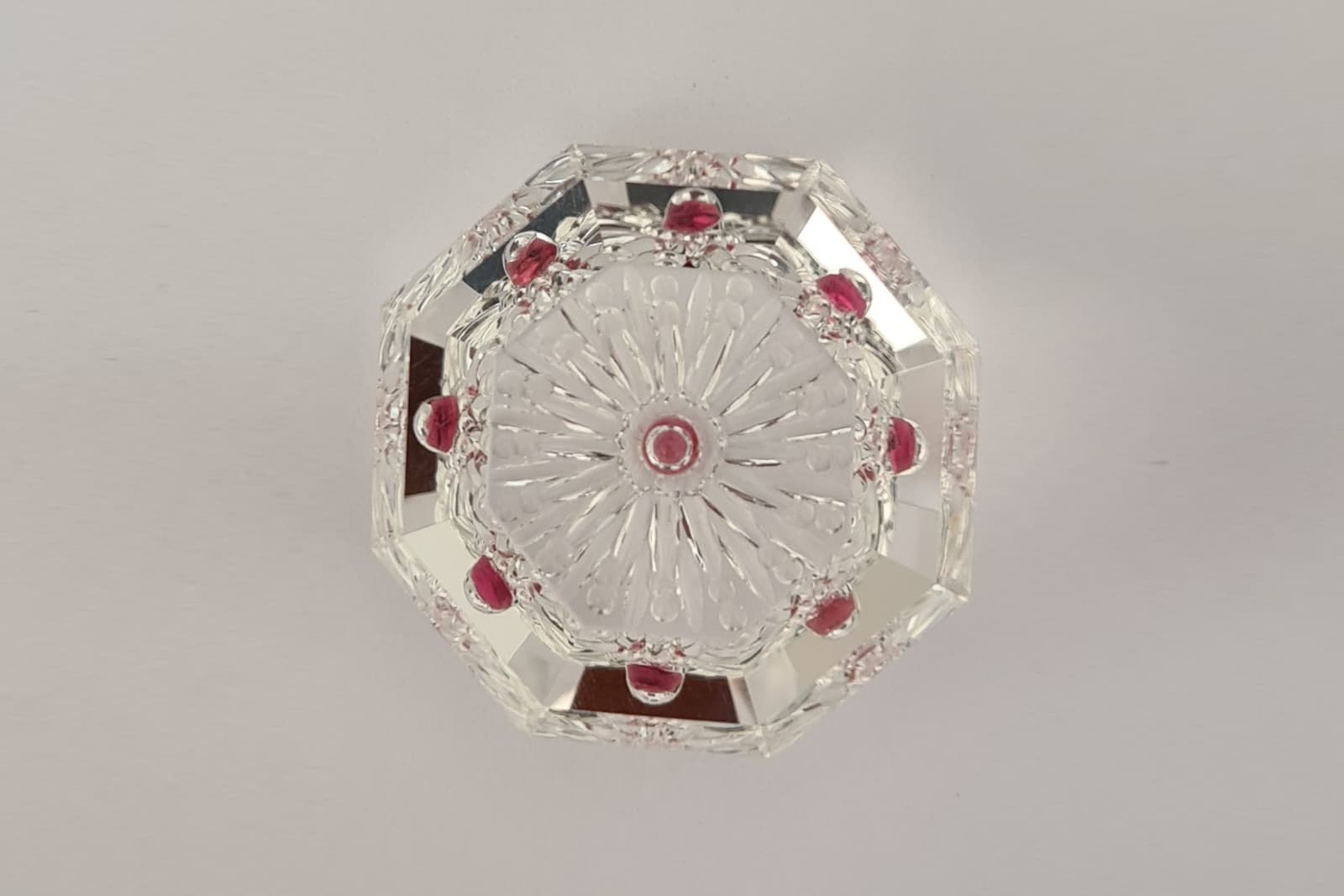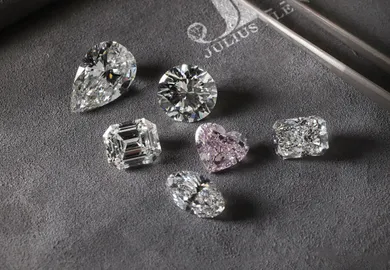

A Cut Above: The Unorthodox Gem Cutters Challenging the Status Quo
The modern round brilliant cut is undoubtedly beautiful, but since its inception in the early 20th century it’s become a jewellery mainstay – elegant and unchanging. Look a little deeper though and you’ll discover some innovative gem cutters who are unrestrained by tradition and developing unique ways of shaping facets to create patterns, texture, depth and even curves. Here are six masterful gem cutters transforming the landscape and diversifying away from the round brilliant into something far more exciting.
Viktor Tuzlukov @vtuzlukov
Recognised as one of the best gem-cutters in the world, Victor Tuzlukov had a varied career before training at the Gemological Institute of America, honing his gem-cutting skills and winning countless international awards. Tuzlukov starts with a spark of inspiration, before committing his idea into a diagram which forms the basis of a future gem. Cutting a round diamond from synthetic rough material for his students may take under two hours but it’s a different story when he’s employing his own creative style. He says: “When I cut ‘Fragility of the Eternal,’ which was included in the Guinness World Records Book as the largest faceted spodumene with 3,051 carats and 914 facets, I spent more than three months cutting the gem.” Similarly, his ‘The Initiation’ gem for His Holiness Dalai Lama XIV was planned for six months are required two weeks of dedicated cutting.
Atelier Munsteiner @ateliermunsteiner
Based in the picturesque surroundings of Stipshausen, Germany, Atelier Munsteiner is a gem cutting icon and unique jewellery advocate, led by Tom Munsteiner. His creations have an architectural and geometric flourish that foster an inner landscape, like a city skyline trapped in stasis inside aquamarine, amethyst, rock crystal or tourmaline. “Every new design and every new stone I work with is a challenge of its own for me,” Munsteiner says. “I see the rough gemstone as my canvas: each stone is different and, depending on the colour and size, they set certain borders for me. But within these borders, I can freely shape the gems to a beautiful new form. It’s like a discussion with the gem, to the find the ideal design for it.” Many of these cut gems end up in Atelier Munsteiner jewellery, which has a similarly architectural aesthetic that offers the stone its chance to shine.
Naomi Sarna @naomisarnadesigns
Naomi Sarna’s gemstone creations blur the lines between cutting and carving, resulting in organic shapes that break the geometric conventions of modern gems. As a classically trained sculptor, Sarna forgoes straight lines in favour of sinuous, almost water-like waves that make solid materials look like they are in motion. She says: “Because I understand how light moves in a faceted stone, I can encourage the light to move the way I want it in a carved stone. When I get to an edge, I move the light in a particular way to emphasize the return of colour and light. Usually, I carve the back of the piece to intersect with the front. I’m not just carving the shape; I’m carving the light. And what you see is an illusion. It doesn’t really exist on any surface of the carving. It’s an interplay of light.” Sarna’s River Wind Topaz is the perfect example of her signature style and, even though there are differences between carving and cutting, her pieces reflect a desire to break the boundaries of gemstones and how they are perceived – something shared by her fellow artisans in this article.
Top Notch Faceting @topnotchfaceting
San Francisco-based gem cutter, Jean-Noel Soni, aka Top Notch Faceting, is inspiring not only for his faceted gemstone creations, but also because he is largely self-taught. His interest began with antique jewellery, which his mother collected, and soon morphed into gemstone cutting after a positive experience at a cabochon cutting class at San Francisco’s Randall Museum. After he’d mastered this skill, Soni purchased some old books and started buying the equipment he’d need to create his own faceted gems. “For inspiration, I purposefully ignore other known gemstone proportions and jewellery design and instead look towards other art forms for ideas. For example, I really enjoy paintings and artists from the early 1800s through to the early 1900s,” he says. “On average, depending on the species of crystal and its size, the process can take me between six and 18 hours. This doesn’t count the countless hours of sourcing each stone, which is another hugely important part of the process.
Fredh Jhones @fredhjhones
It is interesting how so many gem cutters never imagined one day their profession would be to enhance what mother nature created so beautifully. “I learned to cut gems with my father-in-law when I was unemployed in 2014 and needed money to support my family,” says lapidarist, Fredh Jhones. “I was given an opportunity to learn, which I did with utmost dedication, love and joy and soon I realised that I had good hands to create unusual cuts.” Fredh turns gems into miniature art object decorated with rather complex patterns, dictated by the stones themselves (it all depends on the shape and ‘imperfections’ of the rough material). He works mostly with quartz and his signature technique is inlaying one stone into another to create astonishing visual effects.
The commerciality of gems means we’re often presented with formulaic stones that prescribe to certain proportions and facet patterns. By stepping back from the status quo and observing gemstones as colourful blank canvases, this group of esteemed gem cutters are redefining what it means to cut and polish a stone into something beautiful.

WORDS
Katerina Perez is a jewellery insider, journalist and brand consultant with more than 15 years’ experience in the jewellery sector. Paris-based, Katerina has worked as a freelance journalist and content editor since 2011, writing articles for international publications. To share her jewellery knowledge and expertise, Katerina founded this website and launched her @katerina_perez Instagram in 2013.

A Cut Above: The Unorthodox Gem Cutters Challenging the Status Quo
The modern round brilliant cut is undoubtedly beautiful, but since its inception in the early 20th century it’s become a jewellery mainstay – elegant and unchanging. Look a little deeper though and you’ll discover some innovative gem cutters who are unrestrained by tradition and developing unique ways of shaping facets to create patterns, texture, depth and even curves. Here are six masterful gem cutters transforming the landscape and diversifying away from the round brilliant into something far more exciting.
Viktor Tuzlukov @vtuzlukov
Recognised as one of the best gem-cutters in the world, Victor Tuzlukov had a varied career before training at the Gemological Institute of America, honing his gem-cutting skills and winning countless international awards. Tuzlukov starts with a spark of inspiration, before committing his idea into a diagram which forms the basis of a future gem. Cutting a round diamond from synthetic rough material for his students may take under two hours but it’s a different story when he’s employing his own creative style. He says: “When I cut ‘Fragility of the Eternal,’ which was included in the Guinness World Records Book as the largest faceted spodumene with 3,051 carats and 914 facets, I spent more than three months cutting the gem.” Similarly, his ‘The Initiation’ gem for His Holiness Dalai Lama XIV was planned for six months are required two weeks of dedicated cutting.
Atelier Munsteiner @ateliermunsteiner
Based in the picturesque surroundings of Stipshausen, Germany, Atelier Munsteiner is a gem cutting icon and unique jewellery advocate, led by Tom Munsteiner. His creations have an architectural and geometric flourish that foster an inner landscape, like a city skyline trapped in stasis inside aquamarine, amethyst, rock crystal or tourmaline. “Every new design and every new stone I work with is a challenge of its own for me,” Munsteiner says. “I see the rough gemstone as my canvas: each stone is different and, depending on the colour and size, they set certain borders for me. But within these borders, I can freely shape the gems to a beautiful new form. It’s like a discussion with the gem, to the find the ideal design for it.” Many of these cut gems end up in Atelier Munsteiner jewellery, which has a similarly architectural aesthetic that offers the stone its chance to shine.
Naomi Sarna @naomisarnadesigns
Naomi Sarna’s gemstone creations blur the lines between cutting and carving, resulting in organic shapes that break the geometric conventions of modern gems. As a classically trained sculptor, Sarna forgoes straight lines in favour of sinuous, almost water-like waves that make solid materials look like they are in motion. She says: “Because I understand how light moves in a faceted stone, I can encourage the light to move the way I want it in a carved stone. When I get to an edge, I move the light in a particular way to emphasize the return of colour and light. Usually, I carve the back of the piece to intersect with the front. I’m not just carving the shape; I’m carving the light. And what you see is an illusion. It doesn’t really exist on any surface of the carving. It’s an interplay of light.” Sarna’s River Wind Topaz is the perfect example of her signature style and, even though there are differences between carving and cutting, her pieces reflect a desire to break the boundaries of gemstones and how they are perceived – something shared by her fellow artisans in this article.
Top Notch Faceting @topnotchfaceting
San Francisco-based gem cutter, Jean-Noel Soni, aka Top Notch Faceting, is inspiring not only for his faceted gemstone creations, but also because he is largely self-taught. His interest began with antique jewellery, which his mother collected, and soon morphed into gemstone cutting after a positive experience at a cabochon cutting class at San Francisco’s Randall Museum. After he’d mastered this skill, Soni purchased some old books and started buying the equipment he’d need to create his own faceted gems. “For inspiration, I purposefully ignore other known gemstone proportions and jewellery design and instead look towards other art forms for ideas. For example, I really enjoy paintings and artists from the early 1800s through to the early 1900s,” he says. “On average, depending on the species of crystal and its size, the process can take me between six and 18 hours. This doesn’t count the countless hours of sourcing each stone, which is another hugely important part of the process.
Fredh Jhones @fredhjhones
It is interesting how so many gem cutters never imagined one day their profession would be to enhance what mother nature created so beautifully. “I learned to cut gems with my father-in-law when I was unemployed in 2014 and needed money to support my family,” says lapidarist, Fredh Jhones. “I was given an opportunity to learn, which I did with utmost dedication, love and joy and soon I realised that I had good hands to create unusual cuts.” Fredh turns gems into miniature art object decorated with rather complex patterns, dictated by the stones themselves (it all depends on the shape and ‘imperfections’ of the rough material). He works mostly with quartz and his signature technique is inlaying one stone into another to create astonishing visual effects.
The commerciality of gems means we’re often presented with formulaic stones that prescribe to certain proportions and facet patterns. By stepping back from the status quo and observing gemstones as colourful blank canvases, this group of esteemed gem cutters are redefining what it means to cut and polish a stone into something beautiful.

WORDS
Katerina Perez is a jewellery insider, journalist and brand consultant with more than 15 years’ experience in the jewellery sector. Paris-based, Katerina has worked as a freelance journalist and content editor since 2011, writing articles for international publications. To share her jewellery knowledge and expertise, Katerina founded this website and launched her @katerina_perez Instagram in 2013.


